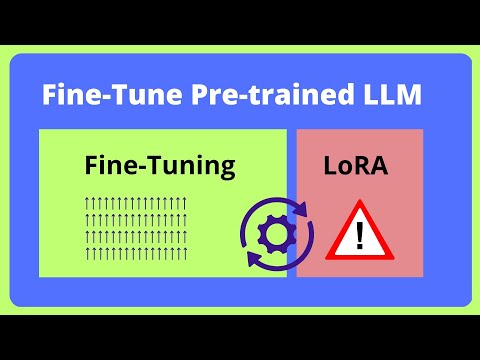Description:
Explore a 28-minute technical video analyzing MIT's research on the fundamental differences between Parameter Efficient Fine-Tuning (PEFT) Low-Rank Adaptation (LoRA) and full fine-tuning methods for language models. Dive deep into the spectral properties and structural distinctions between these approaches, understanding how LoRA introduces "intruder dimensions" - new high-ranking singular vectors orthogonal to pre-trained weights - while full fine-tuning makes subtle adjustments to existing singular vectors. Learn about the trade-offs between computational efficiency and model adaptability, examining how LoRA's rank settings influence generalization behavior and retention of pre-trained knowledge. Follow along with detailed segments covering structural differences, rank versus size relationships, SVD spectral properties, weight tensor update functions, and practical examples, concluding with insights on LoRA rank stabilization and essential takeaways for implementing these fine-tuning methods.
Read more

Spectral Analysis of LoRA vs Full Fine-Tuning in Language Models
Add to list
#Computer Science
#Deep Learning
#Stable Diffusion
#LoRA (Low-Rank Adaptation)
#Machine Learning
#Artificial Intelligence
#Neural Networks
#Mathematics
#Algebra
#Linear Algebra
#Engineering
#Electrical Engineering
#Signal Processing
#Spectral Analysis
#Singular Value Decomposition
#Fine-Tuning
#Parameter-Efficient Fine-Tuning